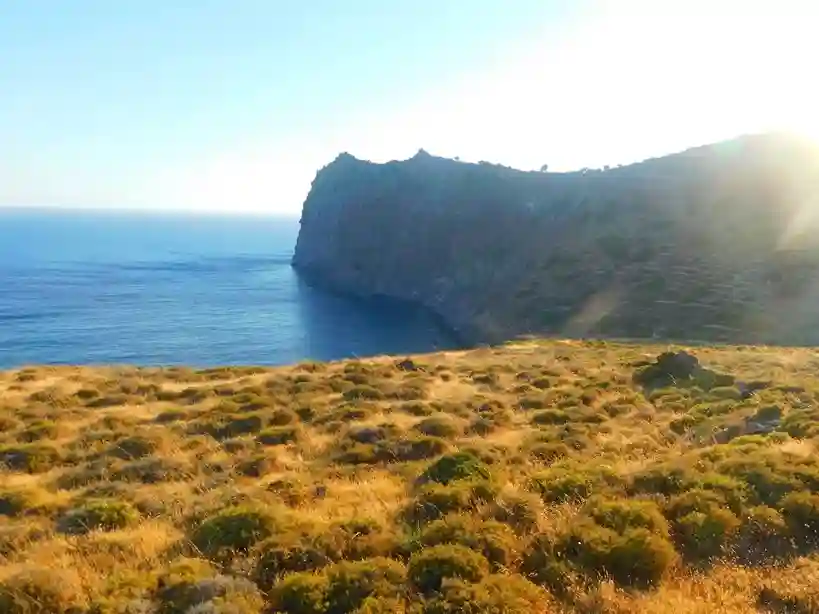
‘Argos’ occupies the southwestern part of Nisyros.
This area extends from the ‘Stavros’ monastery to the sea.
According to reports by various historians and travelers visiting the island, as well as certain documents from the knights’ era (Ioannite battalion), it is understood that an old (knights’) castle existed in the area (at the ‘Stavros’ site, in particular).
This was inhabited until the 15th century. Few relics of these castle residences can be seen now.
Stones from the ancient buildings were used to landscape the area into its current known form.
The remnants of a large classic building as well as ancient square pools, vessel fragments and grindstones have been identified in ‘Argos’, not far from the sea.
A monumental inscription dated from 2nd century B.C. etched in marble, refers to Argeios Poseidon.
It is possible that the area also hosted the profound temple cited by Strabo.
The same area contains two convoluted underground tunnels, cut into tuffic rock and reinforced by local ‘broken’ andesite lava; perhaps these served as refuges for the population against invading pirates and Turks.
They do not allow easy access and no archaeological research has been conducted that would provide further information. There are vast reserves of ‘broken’ stone in the entire Argos region; these are andesite lava fragments, originating from quarrying operations that produced the famous Nisyros grindstones.
All remaining walls that retain Argos ‘benches’ have been built using such quarry waste materials.






















































































































































































































































































































































































